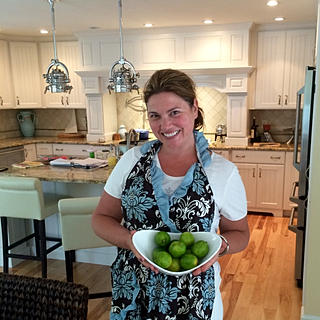Fäviken and New Nordic Cuisine
- Tricia Cohen
- Dec 13, 2016
- 3 min read
Updated: Dec 18, 2022

How did I end up going to Fäviken? Let's say that Chef's Table on Netflix was excellent.



Three flights, two cities, a one-hour cab ride, and over the hills and through the woods (literally) to get to Jarpen, Sweden, the home to Fäviken. Those thinking at this point that we are crazy to know this... it was entirely worth it, and I would do it again.



This is not just a restaurant, Fäviken is an experience. Tucked away on a 20,000-acre estate, 470 miles north of Stockholm, lies the 19th-century Fäviken Egendom estate. The attention to detail is perfect. Nothing frilly, fancy, or fussy... just right. Perfectly decorated, well-selected plates and accessories in a rustic but modern setting. Though this estate has welcomed guests for decades, it was not until recently that it was placed on the map because of the chef, Magnus Nilsson. In 2008, Nilsson had just returned to Sweden from Paris, where he was a chef. Fäviken hired Nilsson to be their Sommelier. However, the Chef for the restaurant did not show up for work, and Nilsson stepped into a role that he has yet to leave.


Inspired by traditional Scandinavian foods, Fäviken's interpretation is New Nordic Cuisine. The menu highlights local food traditions but with a modern twist. All the food you are dramatically served is from the estate, including the fish Chef Nilsson catches from the lake. That statement is impressive enough, but consider that each dinner service offers 20 different courses on average. That is a lot of hunting, fishing, gathering, and storing—the menu changes based on the seasons and what is available. During the summer months, the food is bright and vibrant. The root cellar stores all the pickled and preserved food for the winter, which dictates the direction of the menu for the colder months.




Nordic cuisine has made quite a comeback in recent years, thanks to Nilsson and other successful chefs like Rene Redzepi. Rene is the Executive Chef of Noma in Copenhagen, known as one the top, if not the top, restaurants worldwide. The name Noma is a contraction of the phrase Nordic Mad; the word mad is food in Danish. New Nordic cuisine is exciting for those around the world, as it is not only delicious, it is healthy. Using fresh seafood, wild game, berries, poultry, root vegetables, plants, and herbs to create a truly unique taste and experience. These restaurants, and many more, reflect the New Nordic approach toward cuisine.
Over the last 100 years, this region, like others, has experienced a change in food quality and taste. Where there was once rich farmland yielding fresh vegetables and grain, purveyors offering fresh meat and cheese, all celebrating the abundance of diverse foods, now stood packaged and processed food that was quick, yet unhealthy, coming from distant lands. These new "modern and convenient" choices affected local farmers' esses and were starting to impact consumers' health. (ah, hum, listening to this America?) The region quietly began a revival, moving away from overly processed food and revisiting its Nordic heritage. These choices were nutritious, tasty, inventive, and locally produced.
Food in Scandinavia is portrayed as bland and unexciting; this could not be far from the truth. Remember, the Vikings discovered cardamom over 1000 years ago while on a trading trip to Constantinople. This region is accustomed to the warm, rich flavors that their ancestors brought from across the world. Fresh, crisp dill is readily available to garnish the just-caught fish—naturally sweet berries on top of spice-scented cakes. It does not sound bland to me; it sounds like heaven. And no more significant example of exciting cuisine comes from Fäviken.

Fäviken has embraced the new cuisine in the region. Each dish, twenty-eight in our case, was surprising and delicious. When perusing the menu, I was still in shock, not about what I ate, but that what I ate was food that I generally would shy away from, and it was so delicious. It has occurred to me, what else have I been missing? Fantastic restaurants excite the senses, challenge your thoughts about cuisine, and make you crave more. In the 16-seat restaurant, I sat with people from around the world; the closest was Norway. Chefs, cookbook writers (like myself), restaurant owners, and super foodies took that same crazy trip, and they all felt the same as I did. Bravo, Fäviken.






